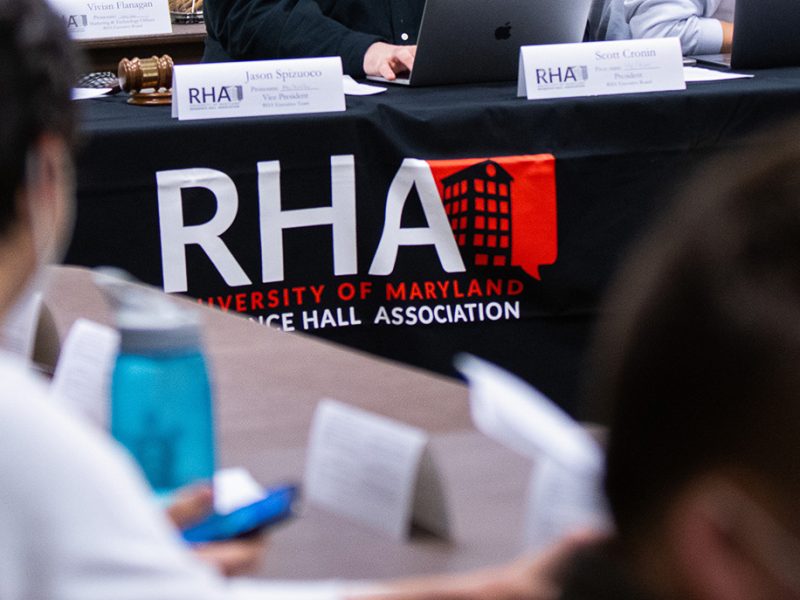White supremacist propaganda is on the rise at universities across the country — and the University of Maryland is among them, according to an Anti-Defamation League study released last week.
From September 2016 to Jan. 29, 2018, the ADL tracked 346 incidents of white supremacist propaganda, including fliers, posters and stickers, on college and university campuses, with 216 campuses targeted.
“White supremacists, particularly alt right groups, have been actively targeting U.S. college campuses since January 2016,” the report stated.
Fifteen incidents have occurred this year as of Jan. 29, according to the report. Between September and December 2016, 41 of the 346 reported incidents occurred, and 147 occurred over the same time period in 2017.
[Read more: White nationalist posters found in at least 4 UMD locations Monday]
“The propaganda delivers a range of messages: it may promote a white supremacist group, or trumpet the urgent need to ‘save’ the white race,” the study reads. “Frequently, the propaganda attacks minority groups, including Jews, Blacks, Muslims, non-white immigrants, and the LGBT community.”
Rashawn Ray, a sociology professor at this university, attributed the uptick to national politics, aided by social media, that helps white supremacist groups organize and spread information.
“Part of that is a result of Trump’s rhetoric,” Ray said. “I think that individuals who align with the alt-right … they feel emboldened.”
Ray added that he thinks the trend has emerged in some ways as a backlash to the nation’s first black president.
“They feel that they can reclaim spaces and reclaim public consciousness now that Trump is in office,” he said.
[Read more: More white nationalist posters found in University of Maryland building]
The ADL recorded seven reported incidents in the state of Maryland, and while the report did not provide a breakdown by school, this university has seen white supremacist propaganda across the campus multiple times over the past year and a half.
White nationalist group Identity Evropa was responsible for the highest number of incidents with 158. Several of the group’s posters were found in this university’s Biology-Psychology building last March. Vanguard America, another group whose posters were found on this university’s campus in several instances last year and in late 2016, was responsible for the third-highest number of incidents, with 46.
“People put up stuff and it’s essentially a nameless crime. It doesn’t mean that these incidents are victimless crimes,” Ray said. “And that is what you have to focus on. When someone writes the n-word on the wall, or hangs a noose or a banana outside of a cultural center, everyone knows who the targets are and everyone knows who the victims are.”
There have been several instances of swastikas drawn or painted in areas on the campus over the past year, including a September incident in Hagerstown Hall, after which a former university employee was charged with malicious destruction of property.
Kanisha Bond, a government and politics professor at this university, said the study shows white supremacist organizations may be turning their recruitment efforts away from working-class young Americans toward college-educated ones.
“There clearly is something about the young, seemingly upwardly mobile, relatively resourced young person that goes to college that these organizations see as attractive,” she said.
Last May, 2nd Lt. Richard Collins, a black Bowie State University student, was stabbed near a bus stop on this university’s campus. Sean Urbanski, then a student at this university, is facing hate crime and murder charges in the killing. Urbanski, who is white, was found to be a member of a Facebook group called “Alt-Reich: Nation,” which included white supremacist content. The page no longer exists.
UMD Socialists President Brendan Sullivan said the ADL study’s results “aren’t all that surprising.”
“That this campus was affected makes sense because they see this place as a fertile, in a sense, breeding ground, where they have the ability to reach out to people that they want to recruit to their hateful project,” Sullivan said.
Sullivan said the economic situation of America’s working class could be playing a role in the rise of white supremacist propaganda, too, as groups seek to blame immigrants and people of color for financial stagnation.
“This is occurring at the same time when the standard of living for the masses of the working class of people in this country is, at best, flatlining, and in many cases going down,” he said. “Due to economic systems which are in no way, shape or form affected by the fight for black liberation or the various fights against racism, sexism, homophobia, etc.”
Ray applauded this university’s administration and police department for their investigations of hate bias incidents, and said the university community is doing a good job of trying to reclaim spaces targeted by hateful messaging.
After Collins’ murder, this university announced a task force to handle the issues of diversity and inclusion on the campus, which has since held several open forums for the campus. In November, this university’s Office of Diversity and Inclusion announced it would hire a hate bias response coordinator, and in January it opened a campuswide survey about diversity and the campus climate.
“This is one creative thing that this university is doing and I think that’s amazing,” he said. “Saying, ‘Let’s reclaim that space. Let’s make that space ‘UMD bias free.’ We’re going to actively work to counter it.'”
But Sullivan said the university could be doing a better job.
“What the administration could be doing better is making it completely clear that they as an administration don’t approve of white supremacism, of racism, etc.,” he said. “Acknowledging that this campus was built initially on the backs of slaves and that this campus has, historically … been the beneficiary of sexism, of racism.”



